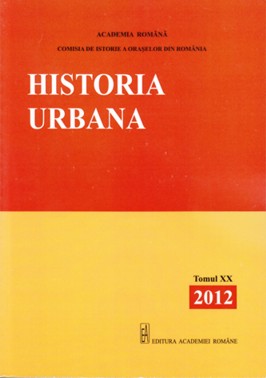Coordonatele şi dinamica funcţiunii de loisir a oraşului Piteşti, de-a lungul ultimelor două secole
The Coordinates and the Dynamics of the Leisure Function of Piteşti along the Two Latest Centuries
Author(s): Dragoş MăndescuSubject(s): History
Published by: Editura Academiei Române
Keywords: Piteşti; loisir; parks; cultural attractions; public space; recent history;
Summary/Abstract: The paper tries to draw the evolution of the leisure function of Piteşti, from the first documented features (archives documents, the testimonies of the contemporaries, postcards etc.) to the present. It is a synthetic and comparative valuation, by periods of time, of the possibilities of spending time the town offered to its inhabitants (because Piteşti has never been a place for villegiatura). There are some stages of the leisure function. The first one (Piteşti – city of merchants) that lasts until the reconfiguration of the public spaces of the town after the big fire from the summer of 1848, is characterized by poor trials without continuity: the first public painting exhibition (1837), the first public library (1840), the first casino (1844). During the second stage (1848–1900 / Piteşti – a town on the brink of modernity) the first theatre of the town was built (1848–1852), some cultural-artistic societies (a choral society was founded in 1866) and some hobby clubs (such as the stamp collectors who also had their own magazine in 1890) were founded, and also a big and beautiful public garden was built (1869); this garden soon became too small for the increasing number of people of the town. During the third stage (1900–1947 / Piteşti – town of the bohemia) the offers became more and more varied: the setting of Trivalea Park (1902–1913), the first cinema projections (1902–1905), the building of a permanent theater hall (1914), the organizing of a popular athenaeum which included a library and a museum (1928). During the "Communist" period (1947–1989 / Piteşti – working class town), i.e. the fourth stage, the town was systematized and thus the public and leisure space was re-defined: new buildings were constructed; there the children (the children’s palace – 1962) and the students (the students house – 1977) spent their spare time, while other buildings were used for big shows, according to the trends of the time (the syndicate culture house whose hall had 800 sits – 1971), while other were intended for sport activities (two stadiums – 1953, 1964, the sports hall – 1972, the Olympic swimming pool – 1984) as well as the setting of new parks. The more recent stage, different from all the previous ones, shows that the 170,000 inhabitants of Piteşti are unable to enjoy neither the cultural (excepting the free concerts in open air) and sports (the stadiums are empty, and so is the Olympic swimming pool) activities, nor the relaxing in the nature (the old public garden, much smaller now and surrounded by concrete streets and buildings, Trivalea Forest is more and more unpopulated but full of cars). Though there are some achievements: the philharmonics, the digital planetarium and the multiplex cinema. We could call this stage Piteşti – the town of the consuming. The relaxation is now represented by the long walks in the hypermarkets.
Journal: Historia Urbana
- Issue Year: XX/2012
- Issue No: 20
- Page Range: 161-181
- Page Count: 21
- Language: Romanian
- Content File-PDF

